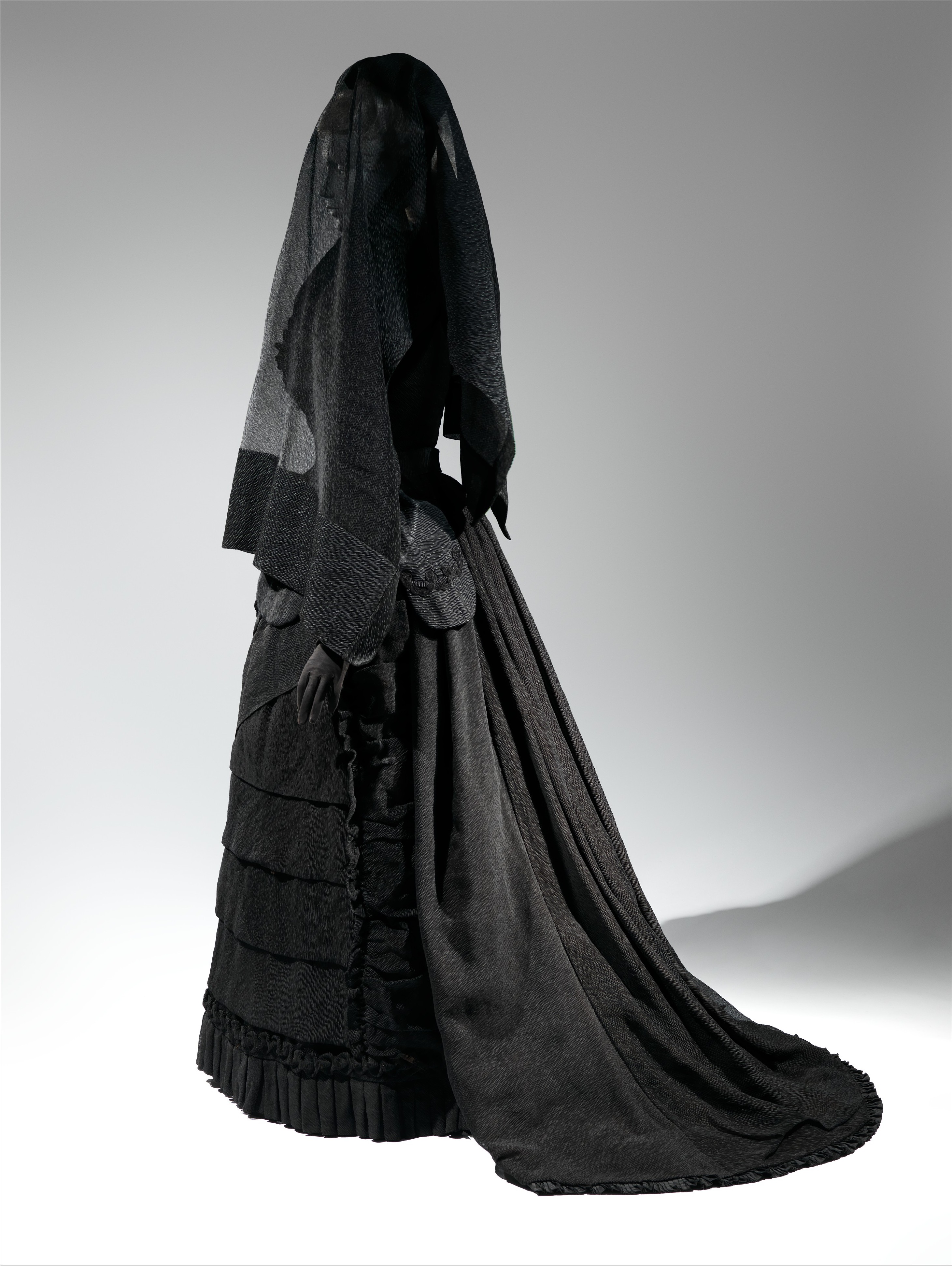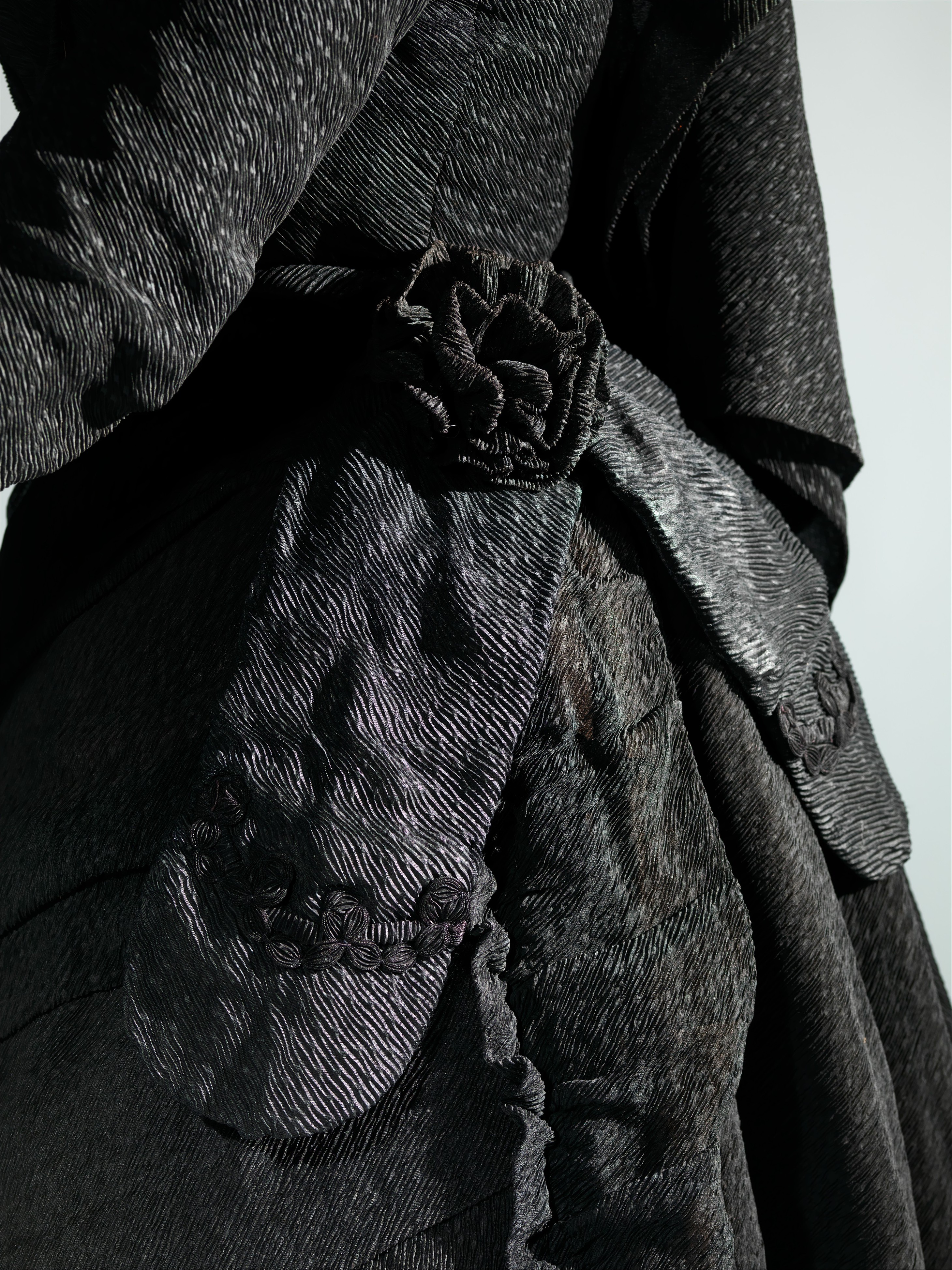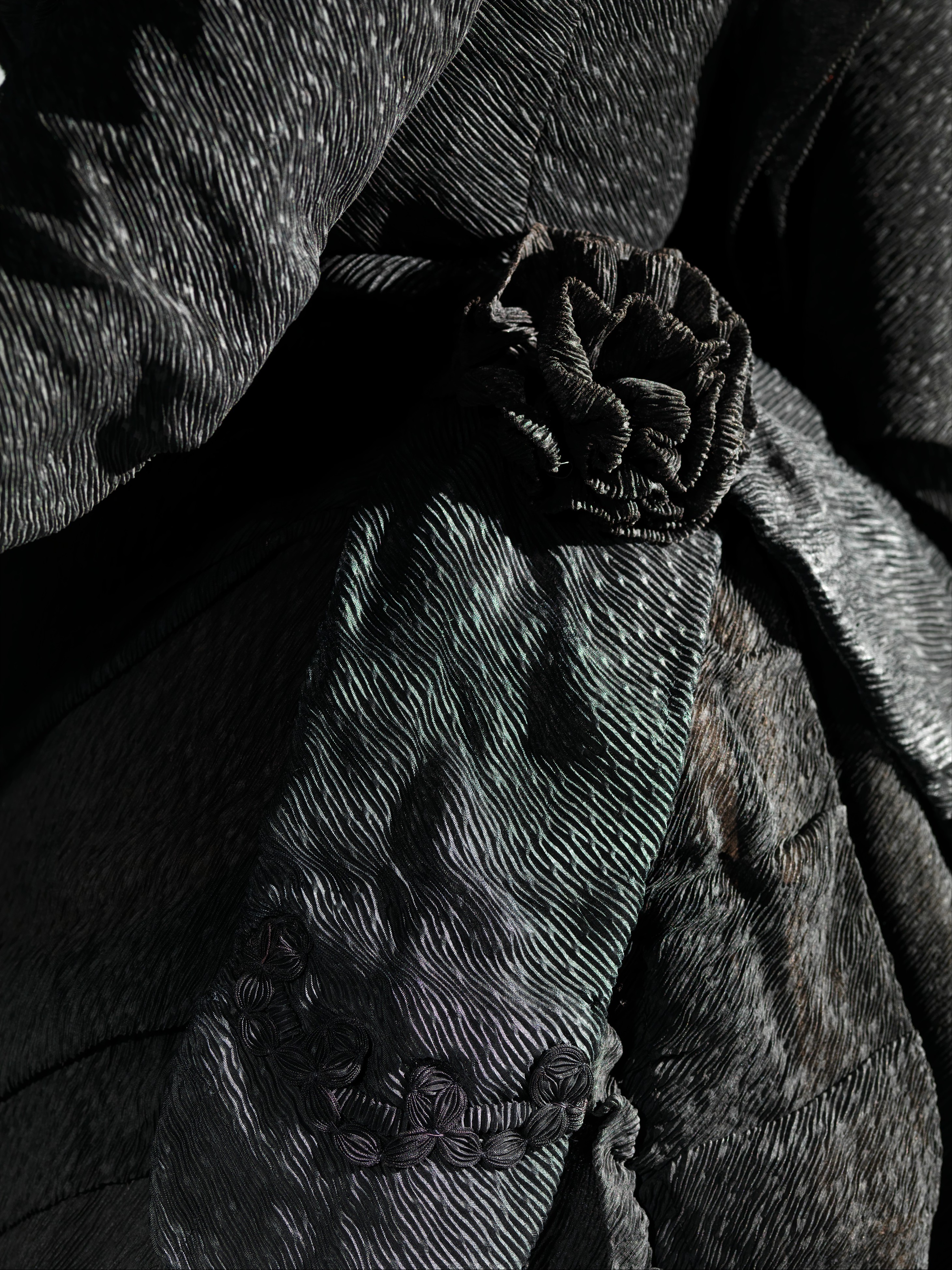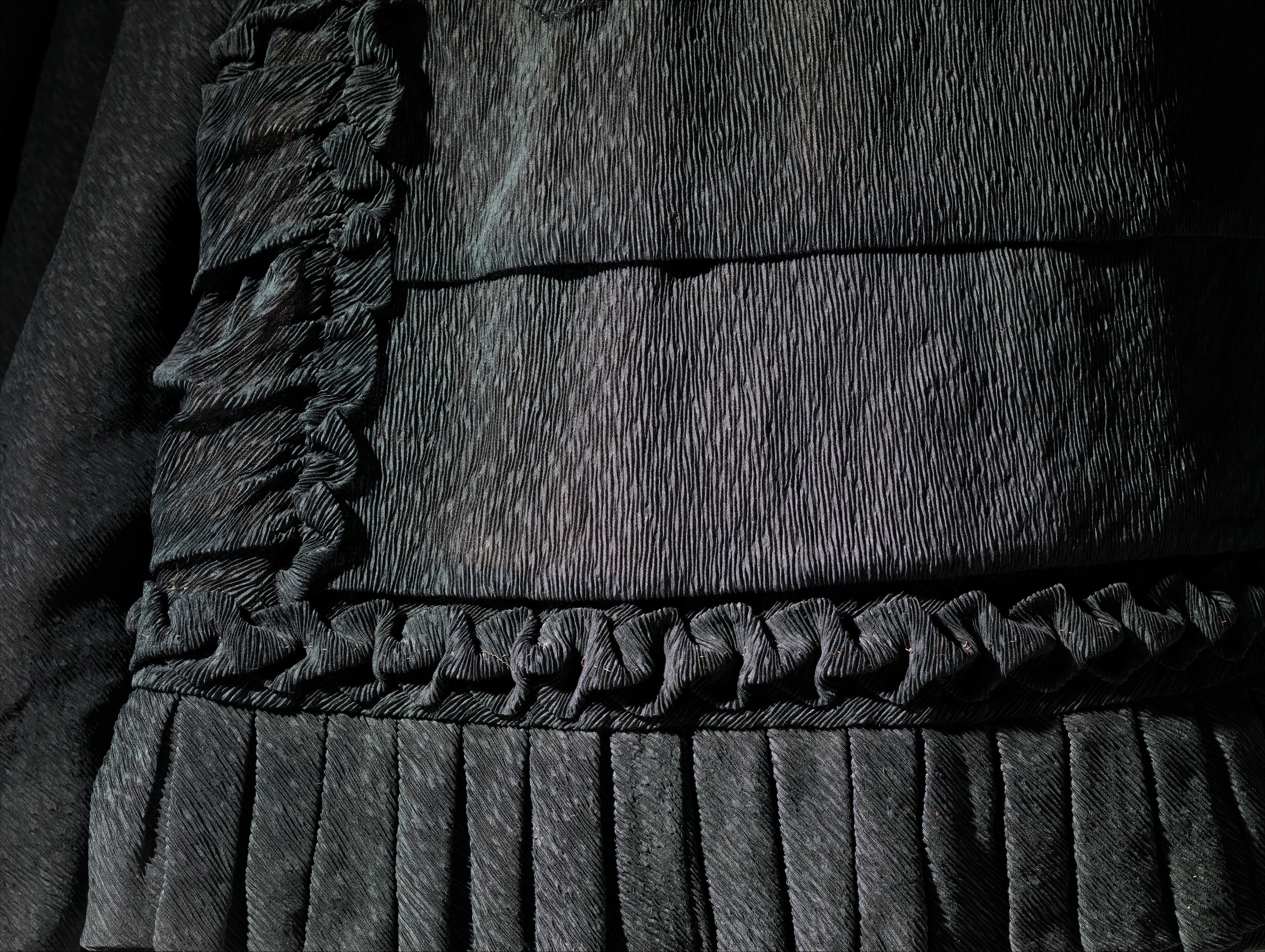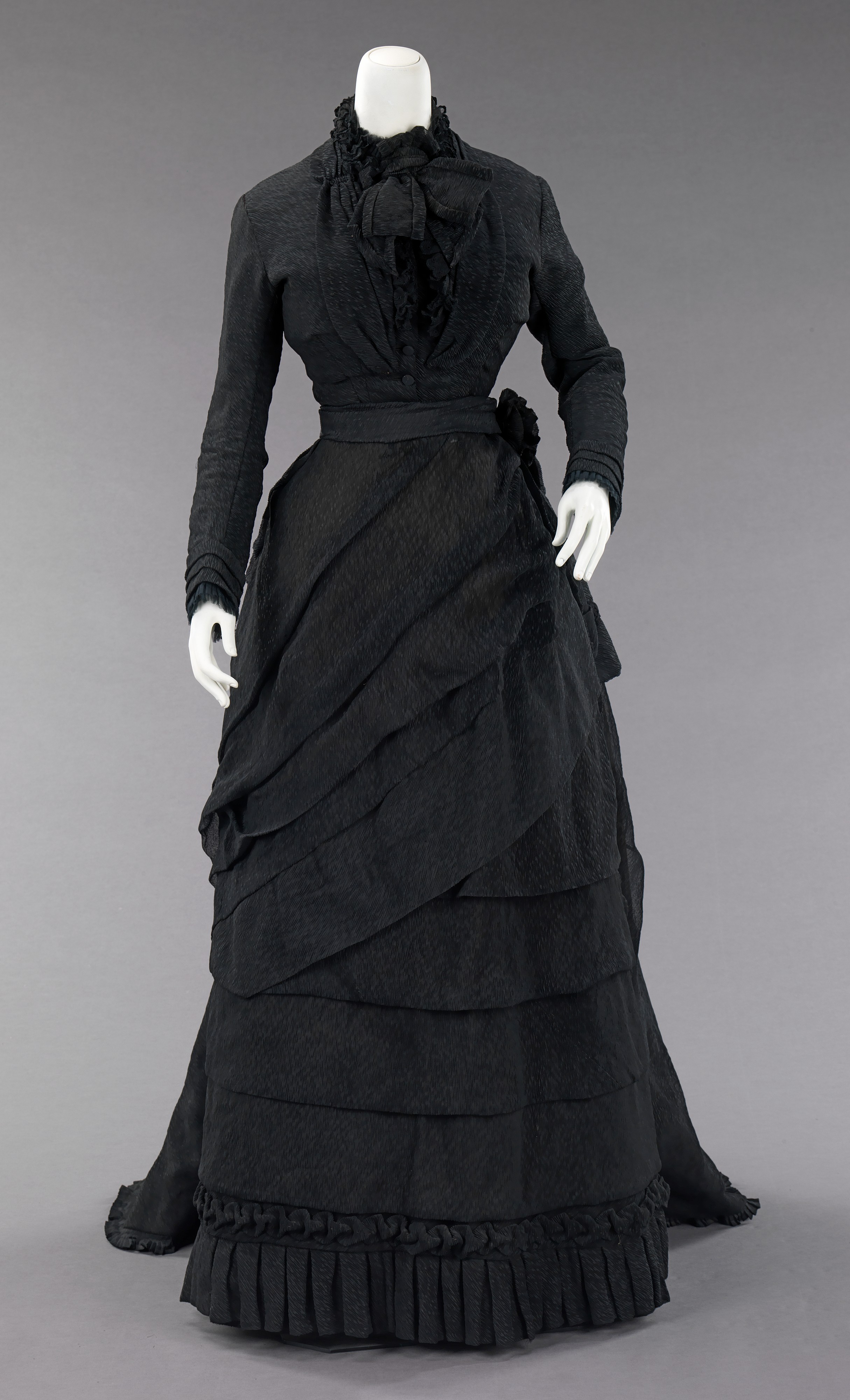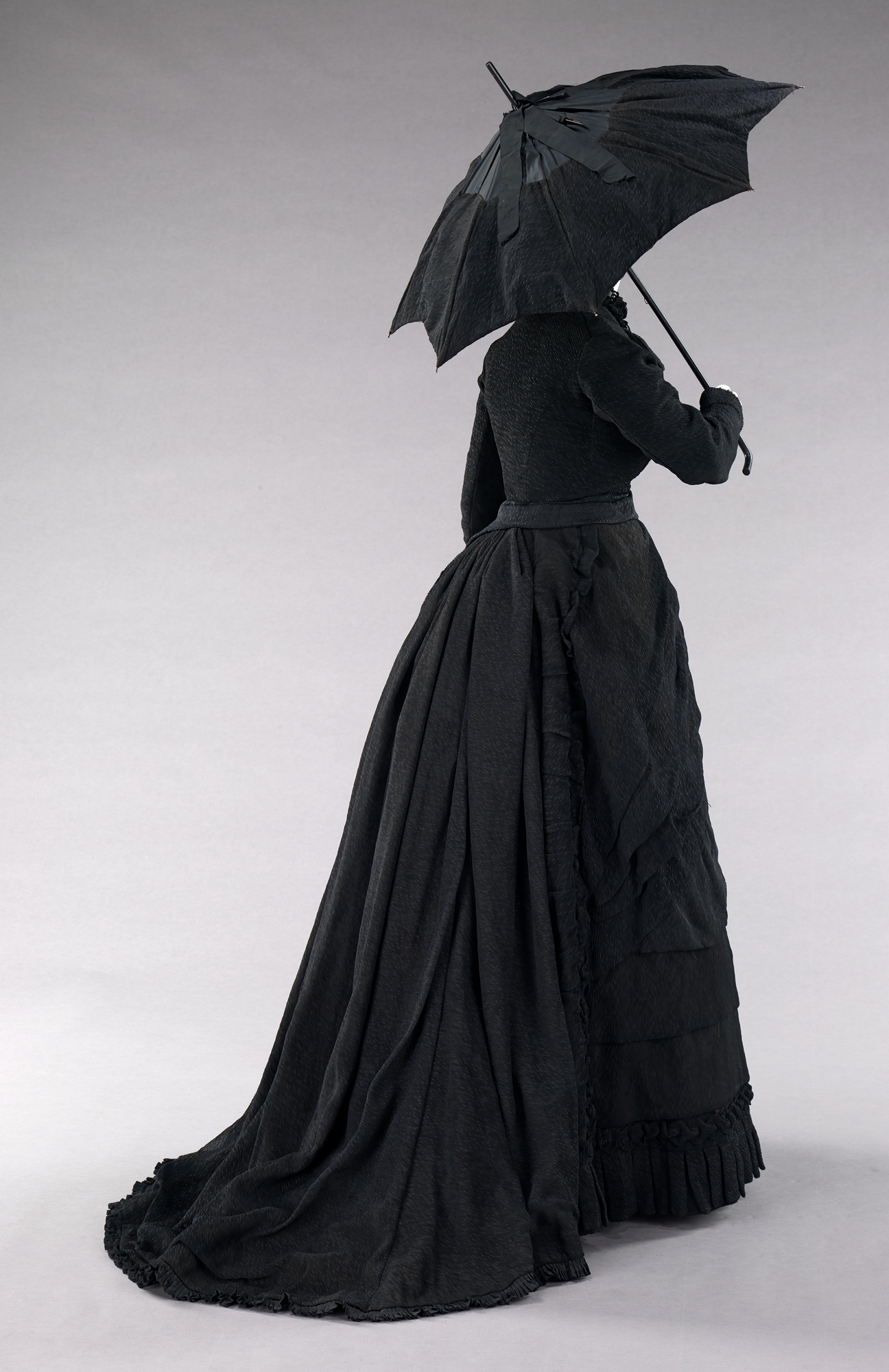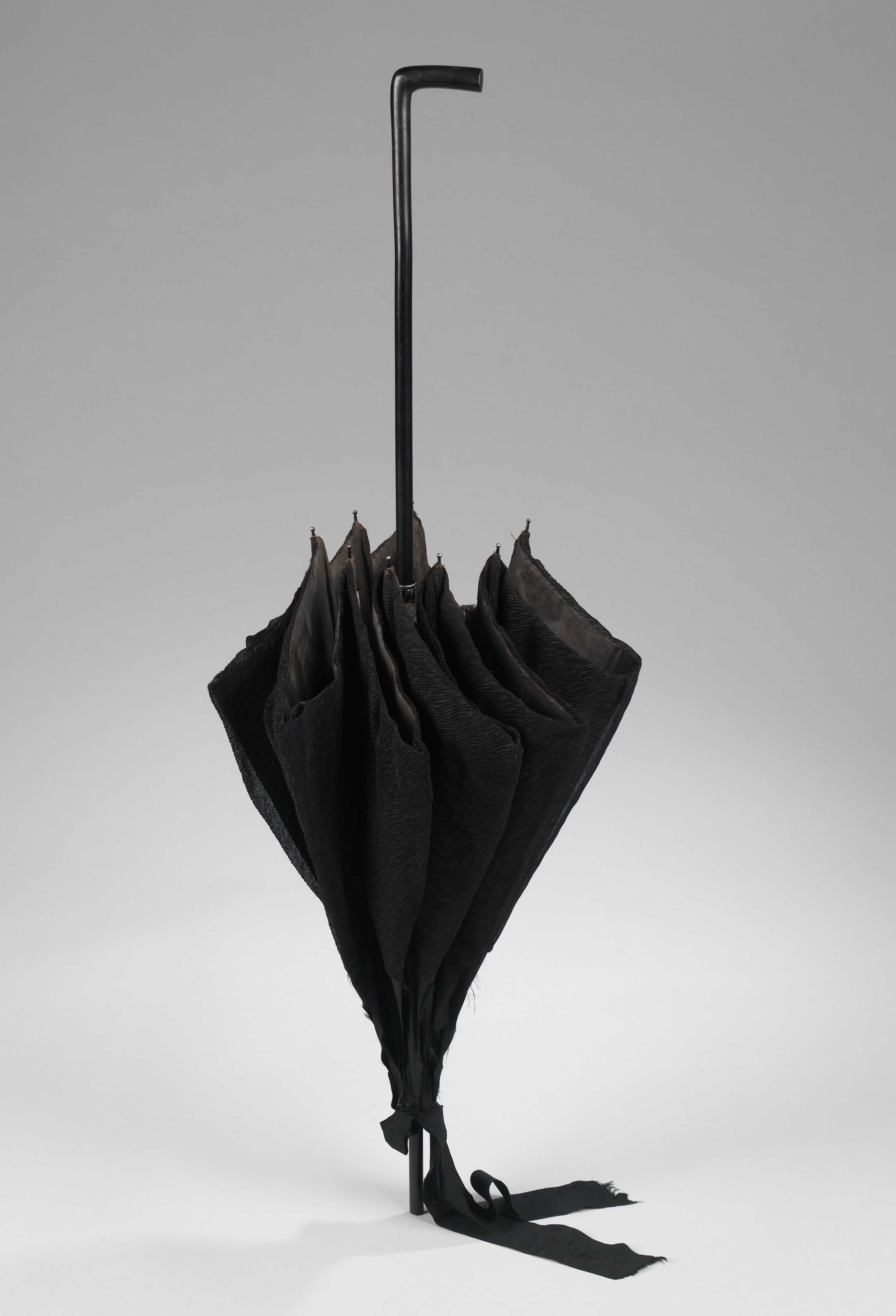Mourning ensemble
Not on view
Black mourning dress reached its peak during the reign of Queen Victoria (1819-1901) of the United Kingdom in the second half of the 19th century. Queen Victoria wore mourning from the death of her husband, Prince Albert (1819-1861), until her own death. With these standards in place, it was considered a social requisite to don black from anywhere between three months to two and a half years while grieving for a loved one or monarch. The stringent social custom existed for all classes and was available at all price points. Those who could not afford the change of dress often altered and dyed their regular garments black. The amount of black to be worn was dictated by several different phases of mourning; full mourning ensembles were solid black while half mourning allowed the wearer to add a small amount of white or purple. Mourning clothing tended to follow the fashionable silhouette of the period, much like this exquisitely finished full mourning dress. This dress shows typical high style 1870s touches such as asymmetry, the bustle back and decorative hem details. The refined details are worked in black crinkled crepe, a common textile used for mourning attire, which indicates that the owner may have had the garment produced for a special occasion.
Due to rights restrictions, this image cannot be enlarged, viewed at full screen, or downloaded.
This artwork is meant to be viewed from right to left. Scroll left to view more.


